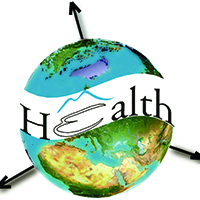Transport geography: Implications for public health

Published: 5 May 2021
Abstract Views: 6787
PDF: 747
HTML: 21
HTML: 21
Publisher's note
All claims expressed in this article are solely those of the authors and do not necessarily represent those of their affiliated organizations, or those of the publisher, the editors and the reviewers. Any product that may be evaluated in this article or claim that may be made by its manufacturer is not guaranteed or endorsed by the publisher.
All claims expressed in this article are solely those of the authors and do not necessarily represent those of their affiliated organizations, or those of the publisher, the editors and the reviewers. Any product that may be evaluated in this article or claim that may be made by its manufacturer is not guaranteed or endorsed by the publisher.
Similar Articles
- Lavinia Ciucă, Vincenzo Musella, Liviu D. Miron, Maria Paola Maurelli, Giuseppe Cringoli, Antonio Bosco, Laura Rinaldi, Geographic distribution of canine heartworm (Dirofilaria immitis) infection in stray dogs of eastern Romania , Geospatial Health: Vol. 11 No. 3 (2016)
- Benyamin Hoseini, Nasser Bagheri, Behzad Kiani, Amirabbas Azizi, Hamed Tabesh, Mahmood Tara, Access to dialysis services: A systematic mapping review based on geographical information systems , Geospatial Health: Vol. 13 No. 1 (2018)
- Robert Bergquist, Prehistoric human migrations: a prospective subject for modelling using geographical information systems , Geospatial Health: Vol. 18 No. 1 (2023)
- Robert Bergquist, Anna-Sofie Stensgaard, Laura Rinaldi, Vector-borne diseases in a warmer world: Will they stay or will they go? , Geospatial Health: Vol. 13 No. 1 (2018)
- David Taylor, Stefan Kienberger, Jack B. Malone, Adrian M. Tompkins, Health, environmental change and adaptive capacity; mapping, examining and anticipating future risks of water-related vector-borne diseases in eastern Africa , Geospatial Health: Vol. 11 No. s1 (2016): HEALTHY FUTURES
- Sokhna Thiam, Samuel Fuhrimann, Aminata Niang-Diène, Ibrahima Sy, Ousmane Faye, Jürg Utzinger, Guéladio Cissé, Urbanisation and its effect on risk factors associated with childhood diarrhoea in Mbour, Senegal: A visualisation , Geospatial Health: Vol. 12 No. 2 (2017)
- Robert Bergquist, John B. Malone, There is more to satellite imagery than meets the eye , Geospatial Health: Vol. 17 No. 1 (2022)
- Michael T. Gebreslasie, Ides Bauwens, MALAREO: a user-driven project , Geospatial Health: Vol. 10 No. 2 (2015)
- Carlos Mena, César Sepúlveda, Yony Ormazábal, Eduardo Fuentes, Iván Palomo, Impact of walkability with regard to physical activity in the prevention of diabetes , Geospatial Health: Vol. 12 No. 2 (2017)
- Robert Bergquist, COVID-19: Past, present and future , Geospatial Health: Vol. 17 No. s1 (2022): Special issue on COVID-19
You may also start an advanced similarity search for this article.

 https://doi.org/10.4081/gh.2021.1009
https://doi.org/10.4081/gh.2021.1009




